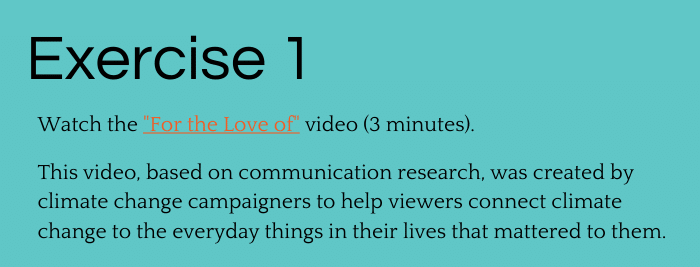Bringing climate change into the here and now
Climate change is fundamentally a difficult problem to keep front of mind:
- It is not here and not now for most of us in Western nations
- With a ‘finite pool of worry’ other things take precedence
- We tend to think that climate change is more likely to impact people and places far away
- Taking action seems unattractive since the rewards for doing so are perceived as far off
- The inherent uncertainty in climate projections allows for wishful thinking.8
This phenomenon is familiar to the social sciences and has its own name – psychological distancing. For more on this, have a look at our webinar and guide, “Managing the psychological distance of climate change.”
A large body of research has revealed the importance of reducing this psychological distancing in order to improve understanding of the risks posed by climate change.
In general, ‘localising’ climate change (for example, by communicating the current and future impacts of sea-level rise on local communities) has been shown to help reduce the sense that climate change is a ‘distant’ issue.
Though weather isn’t climate, it is through the weather that we encounter the climate. Some evidence shows that warm weather can drive belief in climate change.
One study of 89 countries found that when temperatures rise above the seasonal average, so does belief in climate change. In the United States for every degree rise in temperature above the preceding 12 month average, there is a 7% increase in belief in climate change.
So people’s direct experience (as opposed to messages about global averages) is an important factor.
But there are other issues to consider. For example, talking about – or visualising the impacts of – climate change on a local area can make people feel overwhelmed or emotionally numbed. By doing so, localising climate change runs the risk of triggering defense mechanisms such as denial 9.
For that reason it is important to connect messages about impacts with narratives which offer solutions and actions people can take in response to these risks.
Images and stories can play an important part in helping people to make sense of climate science.
The reality is that most people understand the world through stories and images, not lists of numbers, probability statements, or technical graphs.
The project Climate Visuals has identified seven principles for effective visual climate change communication.
Rather than relying on images of polar bears, use images of local climate impacts that are authentic (unposed and unfaked) and contain individuals that the viewer can identify with.
Emotionally powerful images of localised climate impacts should be coupled with images depicting solutions to overcome the sense of hopelessness.
Another useful approach to overcoming psychological distancing is to connect climate change with the things that matter to your audience.
Connecting your research with people’s everyday concerns


The content of these webpages draws on a series of workshops created and developed by Climate Outreach and the Tyndall Centre for Climate Change Research as part of the Helix project.
8 Spence, A., Poortinga, W and Pidgeon, N. (2012). ‘The psychological distance of climate change.’ Risk Analysis, 32(6):957-72. doi: 10.1111/j.1539-6924.2011.01695.x
9 McDonald, R., Chai, H and Newell, B. (2015). ‘Personal experience and the ‘psychological distance’ of climate change: An integrative review.’ Journal of Environmental Psychology. Vol. 44, 109-118

